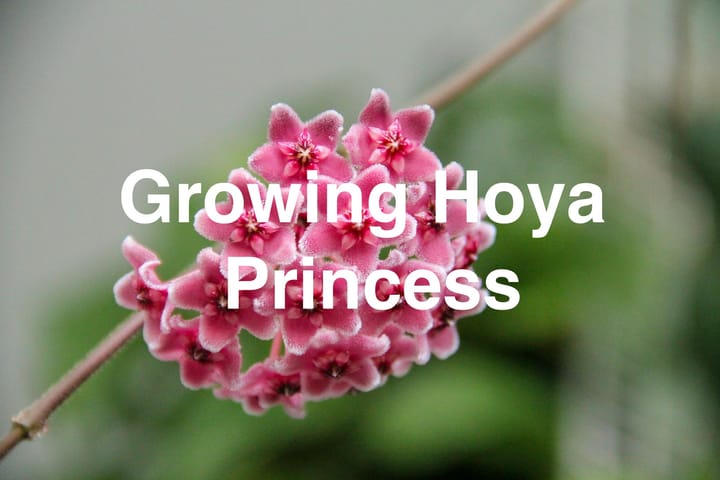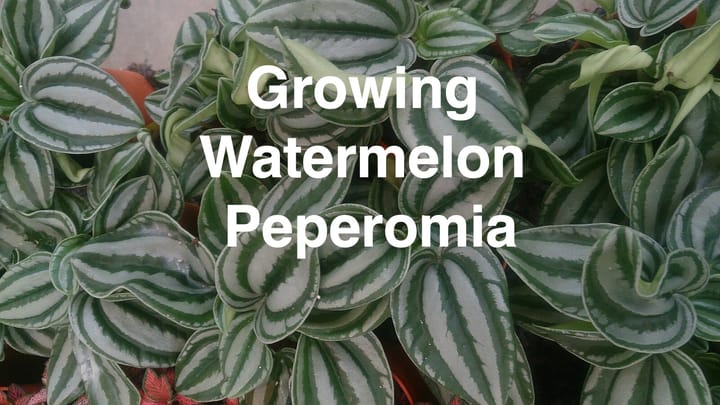How to Grow Sunflowers
Sunflowers, with their vibrant, sizeable blooms adding a splash of cheer to any garden, are as rewarding to grow as they are beautiful.

Characterized by their tendency to follow the sun across the sky, sunflowers are not only aesthetically pleasing but also practical.
They provide seeds for consumption and attract pollinators to your garden.
When deciding to grow sunflowers, you'll find a variety of species available, each with unique characteristics.
Understanding the basics of sunflower cultivation is key to successful growth. These hardy plants prefer sunny spots and thrive in well-draining soil, making them ideal for novice gardeners.
Starting the seeds indoors can give you a head start on the season, particularly in cooler climates. Once established, sunflowers require minimal maintenance, needing just the right amount of watering and the occasional nutrient boost.

As they reach for the skies, their broad heads will not only provide shade but become bustling hubs for local wildlife, especially birds and bees.
Key Takeaways
- Sunflowers are easy-to-grow plants that brighten any garden and attract wildlife.
- They require a sunny location, well-drained soil, and minimal maintenance once established.
- Harvesting sunflowers provides seeds for consumption and supports local ecosystems.
Choosing the Right Sunflower Varieties
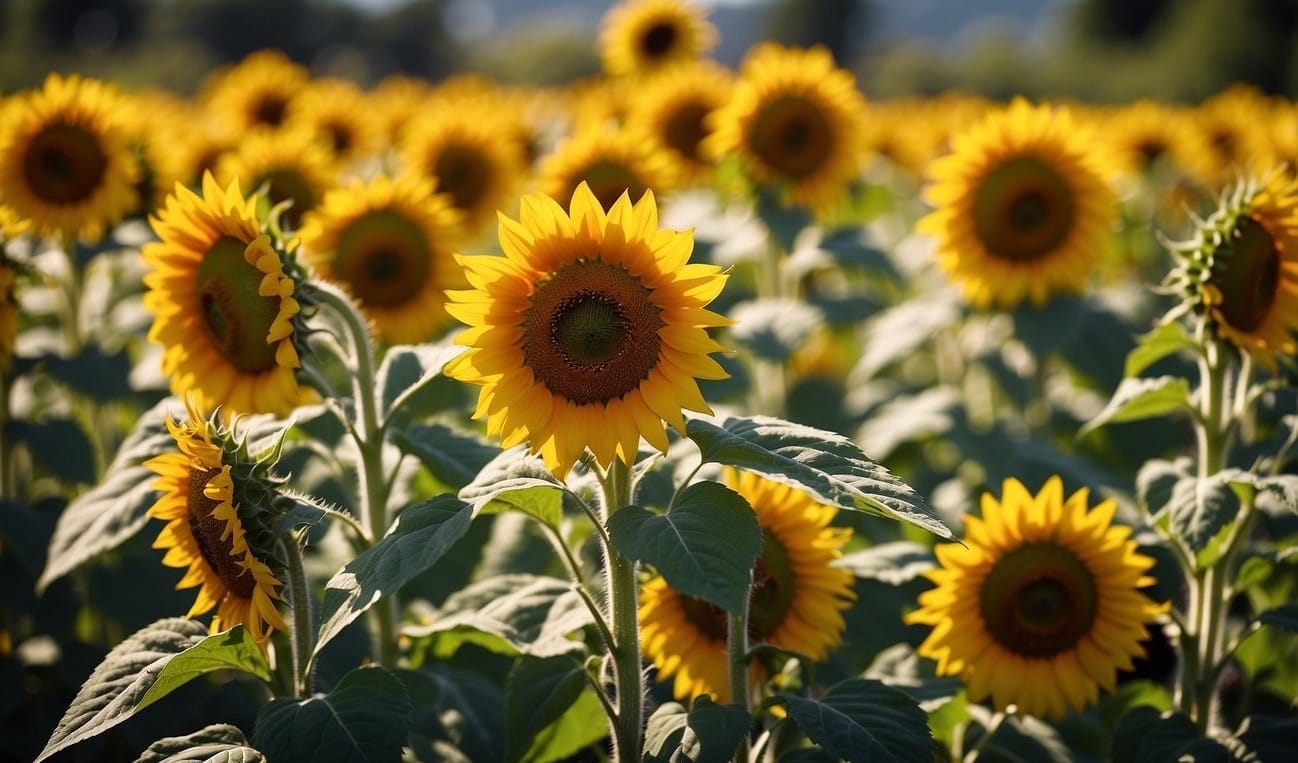
When selecting sunflower varieties, it's essential to consider the full range of options available, from diverse colors and sizes to suitability for local climate conditions and available garden space.
Diverse Colors and Sizes
Sunflowers come in an impressive array of colors beyond the classic bright yellow. Varieties like 'Teddy Bear' offer a unique fluffy, golden appearance, while others provide deep reds, and soft pastels.
Size is equally varied, ranging from compact varieties like 'Topolino' that might grow just 16 inches tall, to massive types such as 'Mammoth' which can tower over 12 feet high. Here's a quick snapshot of the sizes you might consider:
- Dwarf Varieties: Often under 3 feet, suitable for containers and small spaces.
- 'Teddy Bear': a plush, smaller variety with a unique look.
- 'Topolino': compact and suitable for tight garden spaces.
- Large Varieties: Typically 6 feet or taller, they need ample space to flourish.
- 'Mammoth': known for its height and large seed heads.
These selections make it clear that sunflowers are not a one-size-fits-all plant, and your choice should reflect both aesthetic preference and practicality.
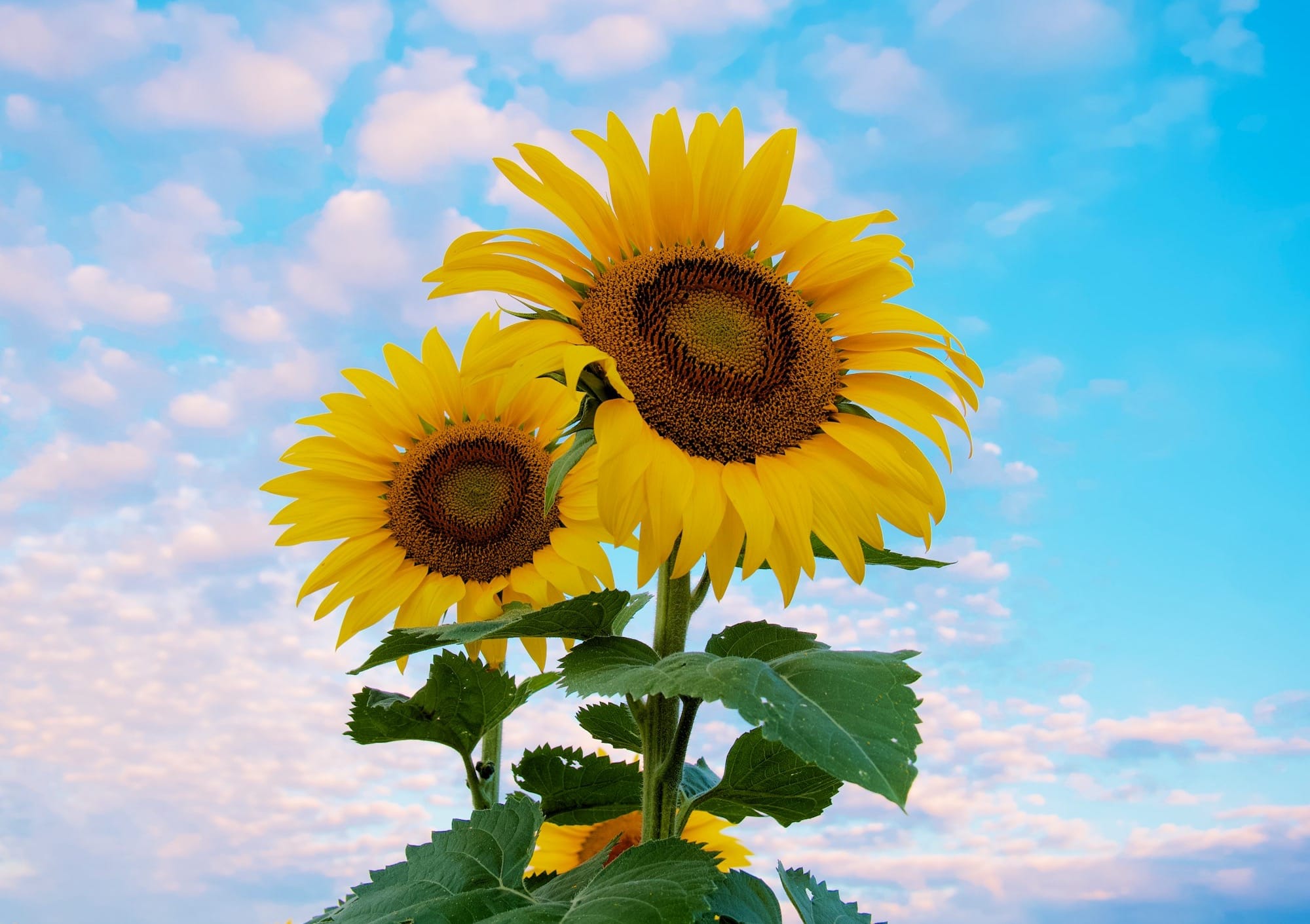
Considerations for Climate and Garden Space
Sunflowers are predominantly annual plants, meaning they complete their lifecycle in a single growing season.
Since they are not perennial, climate considerations mainly revolve around ensuring you plant after the last frost for your region and that the variety chosen can grow to maturity within your growing season.
With regards to garden space, sunflowers can be quite flexible but do have specific needs:
- Small garden spaces or containers: Opt for dwarf varieties that manage spatial constraints well.
- Large garden areas: You can select from among the taller, big-headed types of sunflowers like 'Mammoth', which not only look majestic but also provide ample seeds for harvesting.
Remember to account for the growth habits of your selected varieties. Ensure proper spacing—at least 12-18 inches apart for smaller varieties and 2-3 feet apart for larger types—to accommodate their full growth and prevent overcrowding.
This spacing is crucial for your sunflowers to thrive and achieve their full potential.
Understanding Sunflower Basics
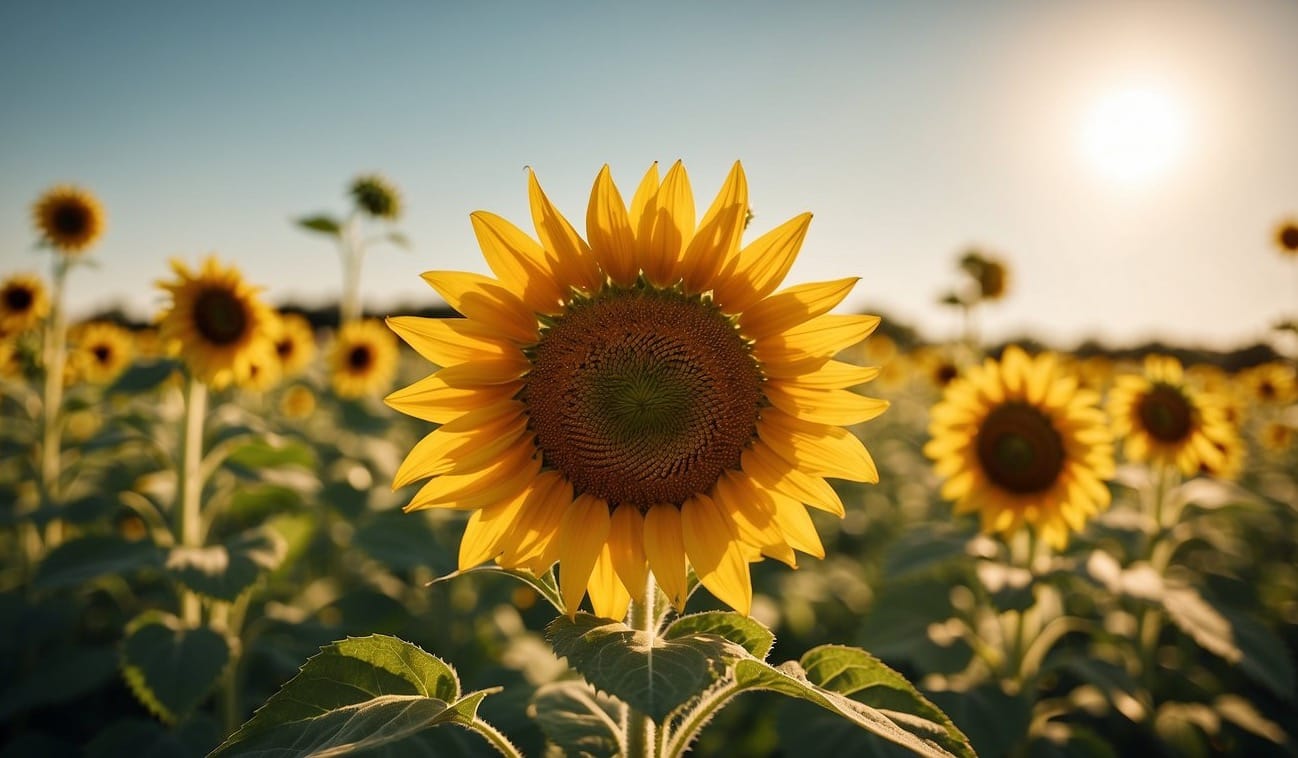
When you decide to grow sunflowers, you're engaging with the Helianthus annuus species, an annual plant renowned for its large, bright yellow blooms that add cheer to any garden setting.
Sunflowers thrive in environments that provide full sun and are also heliotropic during their early growth stages, meaning their blooms follow the sun across the sky.
Botanical Characteristics
Scientific Name: Helianthus annuus
Plant Type: Annual
- Stem: Robust, hairy stems can reach towering heights depending on the variety.
- Leaves: Rough, broad, lanceolate leaves are often heart-shaped at the base.
- Flowers: The iconic blooms exhibit a central disc, usually brown or dark, surrounded by bright yellow petals. Sunflower sizes can range from a few inches to 20 inches in diameter.
Preferred Climate:
- Sunlight: Full sun (at least 6-8 hours of direct sunlight per day).
- Soil: Well-draining soil with moderate fertility.
Spacing:
- Plant seeds at least 12-18 inches apart to allow ample space for growth.
Life Cycle and Growth Habits
Germination: 7-10 days after planting at a soil temperature of 70-85°F.
Planting Depth: Seeds should be sown 1 inch deep.
- Sprout to Seedling: Emergence of the first true leaves signifies the seedling stage.
- Vegging: This phase involves significant stem and leaf growth.
- Budding: Flower heads begin to form.
Bloom Period:
- Typically occurs in mid-summer to early fall.
Heliotropic Action:
- Young sunflower plants exhibit heliotropic behavior, though mature flowers tend to face east.
Preparing the Planting Site

Growing sunflowers begins with preparing a site that will foster their growth, ensuring they get the right soil, ample sunlight, and proper spacing.
Soil Requirements
Your sunflowers will thrive in well-draining loam that's rich in organic matter.
Enhance the soil by mixing in compost to improve nutrient content and structure. Aim for a soil pH between 6.0 and 7.5 for optimal growth.
If you're unsure about your soil type or pH level, consider purchasing a soil testing kit.
- Soil Type: Loamy, enriched with organic matter
- pH Level: 6.0 – 7.5
Sunlight and Positioning
Sunflowers require direct sun, so choose a site that receives 6 to 8 hours of direct sunlight a day.
They're not frost-tolerant, so wait until the threat of frost has passed before planting.
Sunflowers grow best in areas that are exposed to full sun throughout the day, away from the shade of buildings or trees.
- Sunlight: 6 – 8 hours of direct sunlight
- Frost: Plant after the last expected frost date
Spacing and Arrangement
Proper spacing allows for adequate air circulation and sunlight exposure.
Plant sunflower seeds 6 inches apart in rows, leaving about 2 to 3 feet between each row.
This arrangement helps to prevent mildew and pests and promotes strong growth.
- Individual Plants: 6 inches apart
- Rows: 2 – 3 feet apart
Planting Sunflower Seeds
Before you dive into sowing your sunflower seeds, know that your timing and methods are crucial for the best possible growth.
Best Time to Plant
To maximize growth, you should plant your sunflower seeds in late spring or early summer.
This is usually after the danger of spring frost has passed, which is essential as sunflowers are sensitive to cold temperatures.
Your local last frost date is a good indicator of when to start planting.
If necessary, sunflower seeds can be started indoors in pots to avoid the unpredictability of late frosts.
Wait until soil temperatures consistently reach at least 55 to 60 degrees Fahrenheit, as sunflowers thrive in warmer conditions.
Seed Depth and Watering
Sunflower seeds should be planted 1 to 2 inches deep and 6 to 36 inches apart, depending on the variety.
This spacing is vital as sunflowers can develop large tap roots and need room to mature.
After planting, water your seeds thoroughly. They need consistent moisture to germinate effectively.
Once the seeds have sprouted, you can reduce watering to once a week. Make sure to water deeply to encourage deep root growth, which is crucial as the plants get taller and need more support.
Caring for Sunflowers
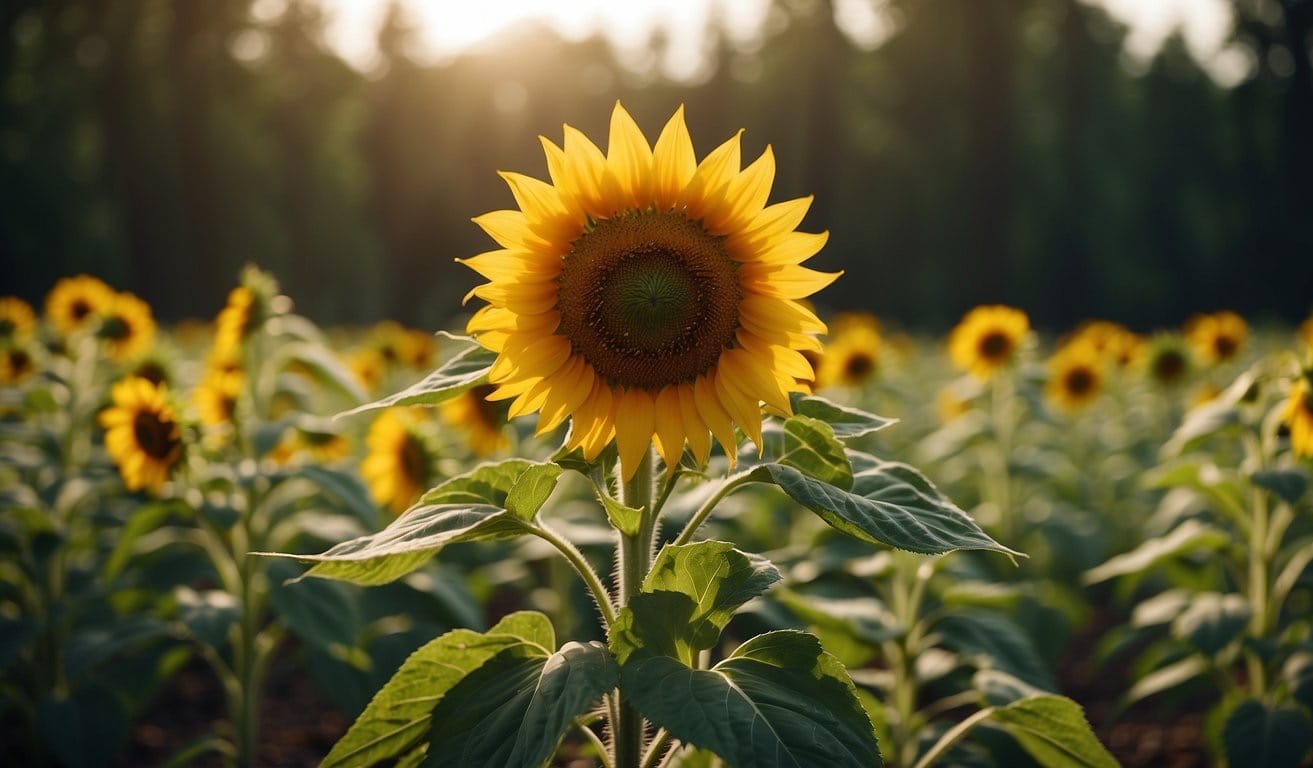
Growing sunflowers requires attention to their needs for water, nutrients, and protection. They thrive with proper care, which ensures robust growth and plentiful blooms.
Watering and Feeding
Sunflowers need consistent moisture, especially during their early growth and when they start to bud. Water deeply once a week, aiming for at least an inch of water to encourage deep root growth.
In terms of feeding, low nitrogen fertilizer or compost can be added to the soil if it's not rich in nutrients.
- Watering: 1 inch per week, more in hot, dry conditions
- Fertilizer: Use sparingly, too much nitrogen can inhibit flowering
Support and Protection from Wildlife
To prevent sunflowers from drooping or breaking as they reach their full height, support them with stakes or a trellis.
Sunflowers can attract wildlife like deer and rodents. You can protect your sunflowers with fencing or nets.
- Support: Use stakes or trellises for taller varieties
- Wildlife Protection:
- Deer: Fences at least 8 feet tall
- Rodents: Netting or metal collars around the base
Dealing with Pests and Diseases
Sunflowers can be susceptible to pests and diseases. Regularly inspect your plants for signs of trouble and take action promptly.
Fungal diseases can be prevented with good air circulation and by avoiding overhead watering. Meanwhile, treat pests like aphids with insecticidal soaps or oils.
- Pests: Treat with insecticidal soap or neem oil
- Diseases: Promote air circulation, water at the base to prevent fungal diseases
Encouraging Pollinators and Wildlife
Sunflowers are magnets for wildlife, especially pollinators like bees and butterflies, and birds that feast on their seeds. Strategically growing sunflowers can turn your garden into a vibrant ecosystem.

Attracting Bees and Butterflies
To ensure that your sunflowers are a haven for bees and butterflies, select varieties known to attract these pollinators. For example, Lemon Queen sunflowers are particularly appealing to bees.
- Planting Tips:
- Sow seeds approximately 1.5 cm deep.
- Maintain moist soil until germination.
- Space your sunflowers 4-5 inches apart to allow room for growth and air circulation.
- Care:
- Avoid wetting the foliage directly to prevent fungal diseases which can deter pollinators.
- Provide support for taller varieties to prevent them from falling over.
Creating a Habitat for Birds
The flower heads of sunflowers produce a bounty of seeds that are a source of food for various bird species. When the blossoms begin to fade and seeds mature, your sunflower garden becomes a bird sanctuary.
- Bird-friendly Practices:
- Leave some flower heads on the stalks after they fade to provide seeds for birds.
- Avoid deadheading all the flowers to ensure a continuous food supply.
- Maintenance Suggestions:
- Consider bird feeders near your sunflowers to attract more birds and provide additional food sources.
- Plant sunflowers in groups to create an ample feeding area for birds.
Harvesting and Enjoying Sunflowers
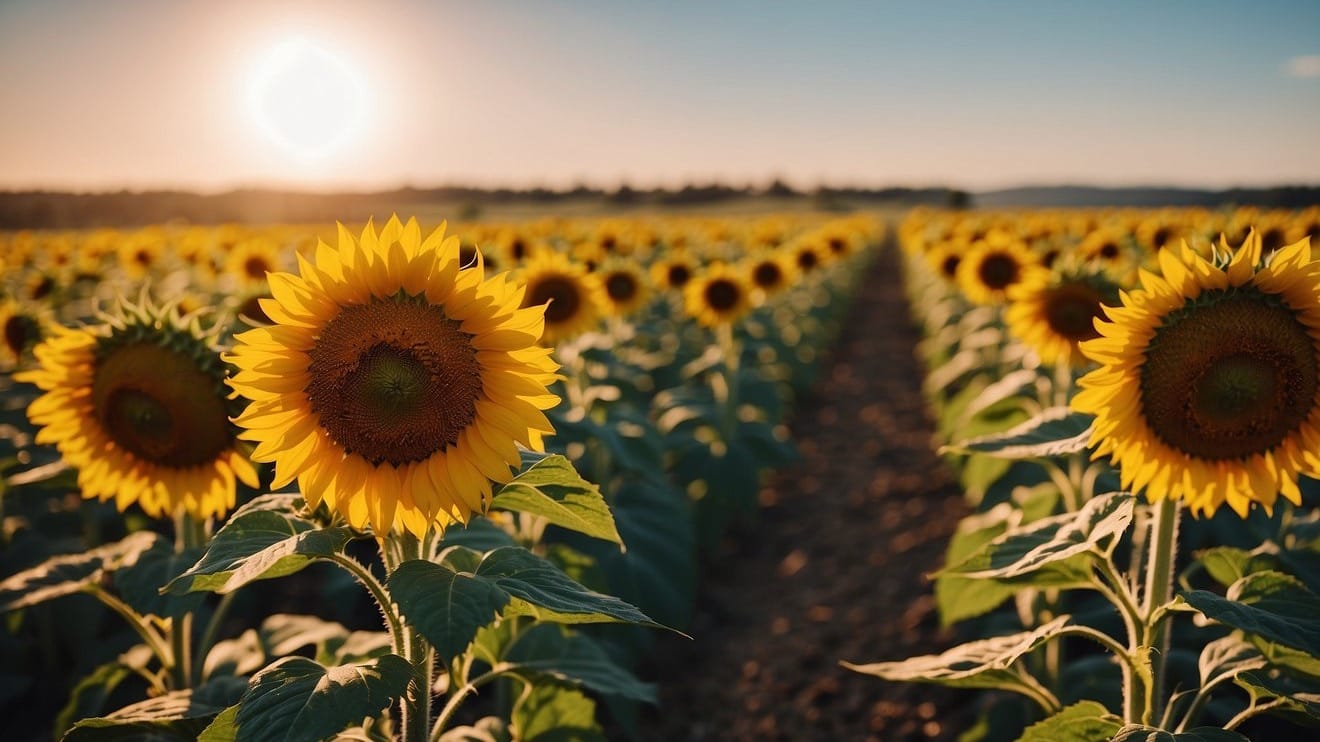
Harvesting sunflowers at the right time and using the correct method are crucial for maximizing the lifespan of cut flowers and the quality of sunflower seeds.
Whether you're interested in creating stunning bouquets or collecting seeds for next season, understanding the harvesting process is key.
When and How to Harvest
To harvest sunflowers for their seeds, wait until the flower head turns brown on the back. The front of the flower head will begin to die back and the seeds will appear plump and somewhat loose.
When it’s time to harvest, use sharp scissors or pruners to cut the stem about one foot below the flower head.
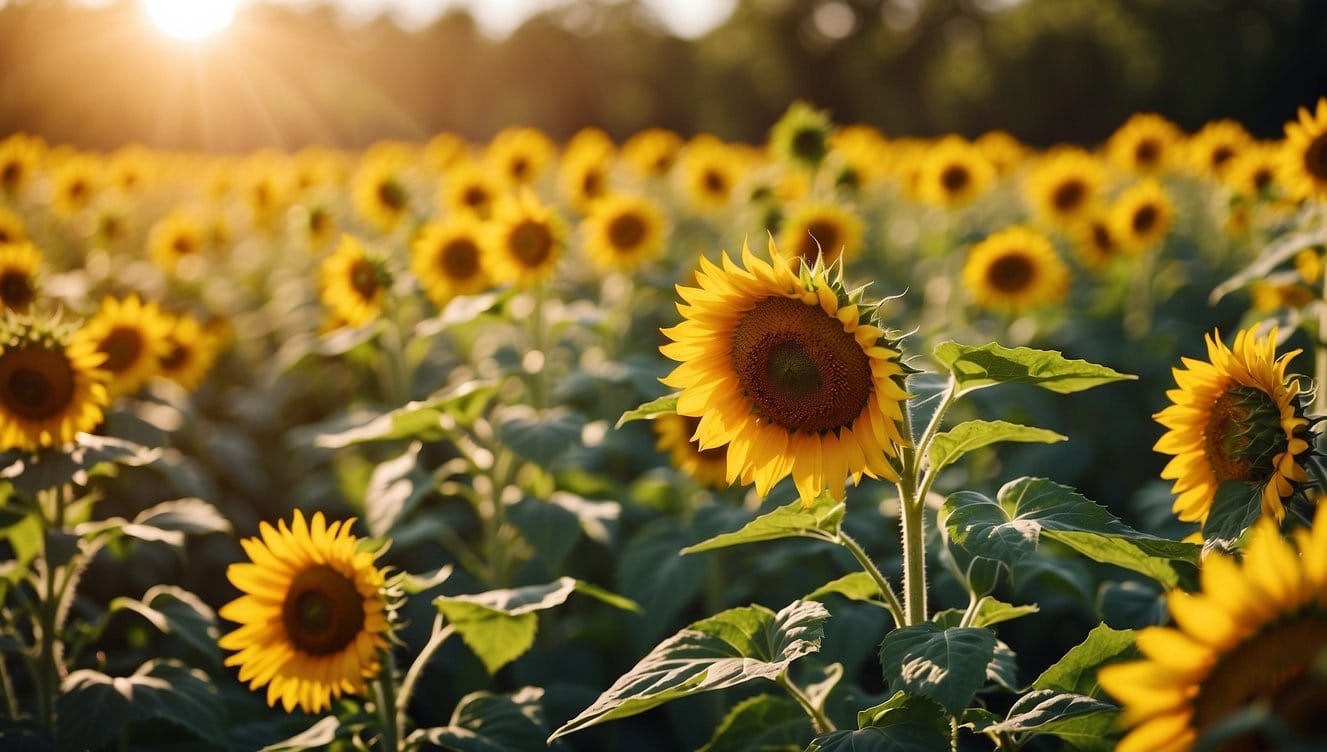
For harvesting sunflower seeds, follow these steps:
- Cut the flower head with a few inches of stem.
- Remove any remaining leaves.
- Place a paper bag over the flower head to catch seeds.
- Hang upside down in a well-ventilated, dry area.
- When fully dry, shake the seeds loose.
Be gentle with the flower heads as they can bruise easily which may impact the quality of your seeds.
Storing Sunflower Seeds
Once your sunflower seeds have dried, store them properly to ensure viability for planting or for consumption:
- For eating:
- Consider roasting the seeds by soaking in salt water overnight, draining them, and then roasting on a shallow baking sheet until they're crisp.
- Store in an airtight container in a cool, dark place.
- For planting:
- Keep seeds in a paper envelope, labeled with the variety and date of harvest.
- Store the envelope in a cool, dry place away from direct sunlight to maintain seed germination rates.
Frequently Asked Questions
Before you begin planting, it’s essential to have the right information for successful sunflower cultivation. Below are some key questions to guide you through the process.
What is the best method for planting sunflowers in containers?
To plant sunflowers in containers, choose a pot at least 12 inches deep and fill it with a well-draining potting mix. Sow the seed 1 inch deep and water thoroughly. Dwarf sunflower varieties are best suited for container growing.
How close to the end of the season can I still plant sunflowers?
For sunflowers to mature and bloom, they need to be planted at least 70 to 100 days before the first expected fall frost depending on the variety. Check the maturity time on your seed packet and count backward from your local frost date to determine the latest planting time.
What steps should be taken to grow healthy sunflowers from seeds?
Plant sunflower seeds 1 inch deep in well-drained, nutrient-rich soil and space them about 6 inches apart. Ensure they receive full sun and regular water, keeping the soil moist until they germinate and establish.
What is the typical growth duration for sunflowers from seed to bloom?
Sunflowers generally take about 80 to 120 days from sowing to blooming, depending on the specific variety and growing conditions.
What soil depth is ideal for planting sunflower seeds?
Sunflower seeds should be planted at a depth of 1 inch, which is optimal for germination.
Which month is most suitable for seeding sunflowers for optimal growth?
The best months for planting sunflowers are April through May. This is when the soil temperature has reached 55°F or warmer. For continuous blooms, you can plant in successive batches every few weeks until late June.
